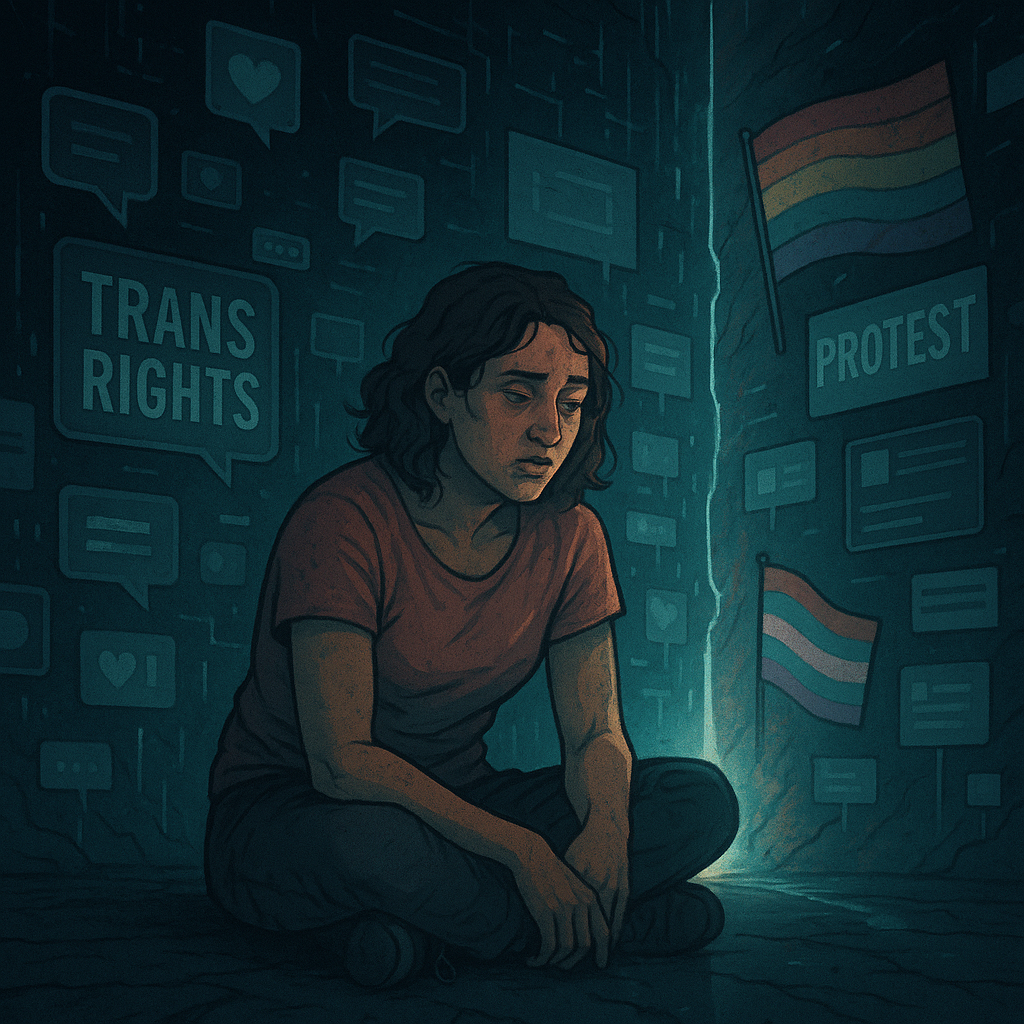The Mirror of Stephanie: The Revolution That Never Comes

Stephanie lived in a city that never slept—one full of murals, protests, coffee shops with pronoun pins, and activist book clubs. She had transitioned five years ago, after what felt like a lifetime in the wrong body. And when she became Stephanie, she also became part of something—a movement, a cause, a struggle. She wasn’t just a woman; she was a symbol of the new world that had to be born.
Her phone lit up constantly: anti-TERF memes, police brutality videos, threads exposing microaggressions in obscure indie films. She devoured them all—retweeted, amplified, corrected others’ language. She blocked the wrong people. She championed the right ones. She knew where she stood: on the side of justice, inclusion, liberation.
But something in her never quite settled.
Despite being “on the right side of history,” Stephanie always felt a gnawing anxiety. She couldn’t rest. The world always seemed on the brink of collapse, and she had to do something. All the time. Post. Fight. Educate. Cancel. Cry. Repeat.
And when she looked in the mirror, sometimes she wasn’t sure if she saw Stephanie—or the armor she had to wear in order to survive this war of identities. Because behind the dopamine rush of outrage and solidarity, there was a constant dread: Am I doing enough? Am I the problem today? Did I unknowingly cause harm?
Every day, the world streamed into her eyes like radiation. Politicians she hated. Billionaires she loathed. Trolls she blocked. And always the creeping shadow of fascism. She had to stay alert. Because the Right was coming. White supremacy. Christian nationalism. Gilead. It was all happening. Right now.
She never saw it coming: the trap.
Stephanie thought she was resisting the system. But in truth, she had become the other half of its face.
Where Daniel wore red and chanted “America First,” Stephanie wore pastel revolution and cried “Trans rights now.” But both were just pieces on the same chessboard—reacting, never moving freely.
Her rage had been hijacked. Her compassion weaponized. She no longer felt safe anywhere—not even among her own. Because the matrix she lived in, the algorithmic reality of memes and callouts and cycles of trauma, didn’t want healing. It wanted perpetual struggle.
Then, one day, she unplugged. Not in some grand act of rebellion, but simply—she ran out of battery.
No charger. No Wi-Fi. A freak blackout. Silence.
And for the first time in years, Stephanie walked outside without narrating it for the internet. She sat on a park bench. Watched people pass by. No slogans. No hashtags. Just... humans. A conservative couple laughed over coffee. A Black teenager helped an old man cross the street. A cop pet a dog. A moment later, a homeless trans woman sat next to her and offered her a granola bar.
There was no script. No outrage. No ideology. Just real contradictions, messy, unsorted, not made for reposting.
Stephanie realized: she had mistaken visibility for victory. She had confused the fight for freedom. She had tried to heal her pain through spectacle. And the spectacle had fed on it.
Her transition was real. Her suffering was real. Her identity mattered. But she saw now: she had been drafted into a war of ghosts—shouting into a void designed to echo forever.
When the power came back, Stephanie didn’t throw her phone away. She didn’t denounce the movement. But she let go of the illusion that she was free just because she was loud.
She still fought for justice—but now, quietly, deliberately, with eyes open. She didn’t perform. She lived.
Moral:
Even the language of liberation can become a cage. Even the struggle for identity can become commodified. The system doesn’t care if you’re Left or Right—it only wants you to stay angry, stay online, stay divided. The matrix isn’t partisan. It’s parasitic.
To be truly free, you must stop reacting—and start seeing. You must unplug.

Member discussion